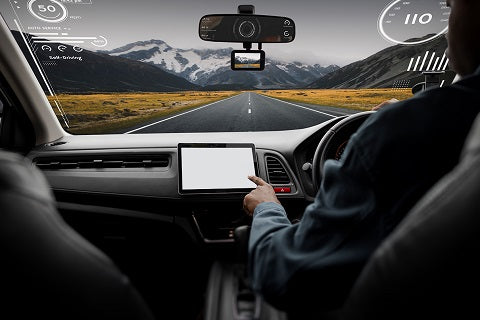
Everything You Need To Know about In-car Infotainment Systems
As the demand for luxurious, safe and smart cars continues to grow, automakers are increasingly developing vehicles with integrated infotainment systems that combine entertainment and information to enhance the in-vehicle experience. Find out what an in-car infotainment system is and learn about the various features and components that work behind the scenes.
The automotive industry as a whole is working to develop innovative technologies that enable better connectivity solutions, improve vehicle safety and enhance the in-vehicle user experience. One of the key technologies is the 'in-vehicle infotainment system', which is the focal point of all modern automotive systems and integrates its functions into a centralized unit for control and monitoring.
What is an in-car infotainment system?
If you're shopping for a new car, you've probably come across the term "infotainment". Infotainment combines two words - 'information' and 'entertainment'. Therefore, an infotainment system in a car is a system that provides a combination of information and entertainment content/services. In addition, infotainment systems are built-in automotive computers that combine a variety of functions from digital radios to built-in reversing cameras.
IVI can be described as a combination of vehicle systems used to provide entertainment and information to the driver and passengers through control elements such as audio/video interfaces, touchscreen displays, button panels, voice commands, and others.

How do in-car infotainment systems work?
In-vehicle infotainment systems integrate with many other in-vehicle and exterior systems to provide entertainment and information to drivers and passengers.
The main components of an in-car infotainment system are:
Integrated Mainframe: The in-vehicle infotainment mainframe is a touchscreen-based tablet device that is mounted on the vehicle's dashboard. The mainframe acts as a perfectly connected control center for the infotainment system through a user-friendly HMI.
Flat View Display: A car flat view display is an integral part of a high-end infotainment system that displays real-time information about the vehicle on a transparent screen integrated into the vehicle's windshield. Flat screen displays help minimize driver distraction while driving and provide assistance with critical details such as speed, navigation maps, electronic digital gauges (information from the vehicle's OBD Port II), climate, multimedia options, and more.
High-end DSPs and GPUs for Multiple Displays: New age infotainment systems are powered by powerful automotive processors designed for advanced IVI systems. These automotive processors are capable of displaying content on multiple displays (e.g., flat screen or windshield, internet-enabled smartphones, audio mainframe, etc.) and provide an enhanced in-vehicle experience for drivers and passengers.
Operating Systems: In vehicle infotainment systems, the operating system needs to be able to support connectivity, convenience features, and downloadable software applications to integrate new features into the system. Operating systems such as Android, Linux, QNX, and Windows are leading the way in infotainment.
CAN, LVDS and other network protocol support (on request): Electronic hardware components in an infotainment system are interconnected via certain standardized communication protocols such as CAN (Controller Area Network). CAN or any other network protocol support allows microcontrollers and devices to communicate with each other in an application without a host computer.
Connectivity Modules: Infotainment systems contain GPS, Wi-Fi and Bluetooth modules that provide connectivity to external networks and devices. These modules help in establishing services such as navigation, internet connectivity, and smartphone integration with the infotainment system.
Automotive Sensor Integration: Proximity sensors, gesture-recognition sensors for detecting ambient light, camera sensors, and many other on-board sensors are integrated with infotainment systems to provide safety-related information to drivers and passengers.
Digital Dashboards: High-tech infotainment systems have transformed automotive cockpit design from static displays of on-board gauges to digital dashboards. Digital instrument clusters include digital displays of traditional analog gauges in the vehicle, such as speedometer, tachometer, and odometer.
The digital instrument cluster obtains information from the vehicle's ECU unit via OBD Port II and displays it on the infotainment system's display. As part of the digital cockpit system, the instrument cluster integrates with other digital interfaces in the vehicle, such as the mainframe, the Horizontal View Display (HUD) HVAC and the infotainment system.

